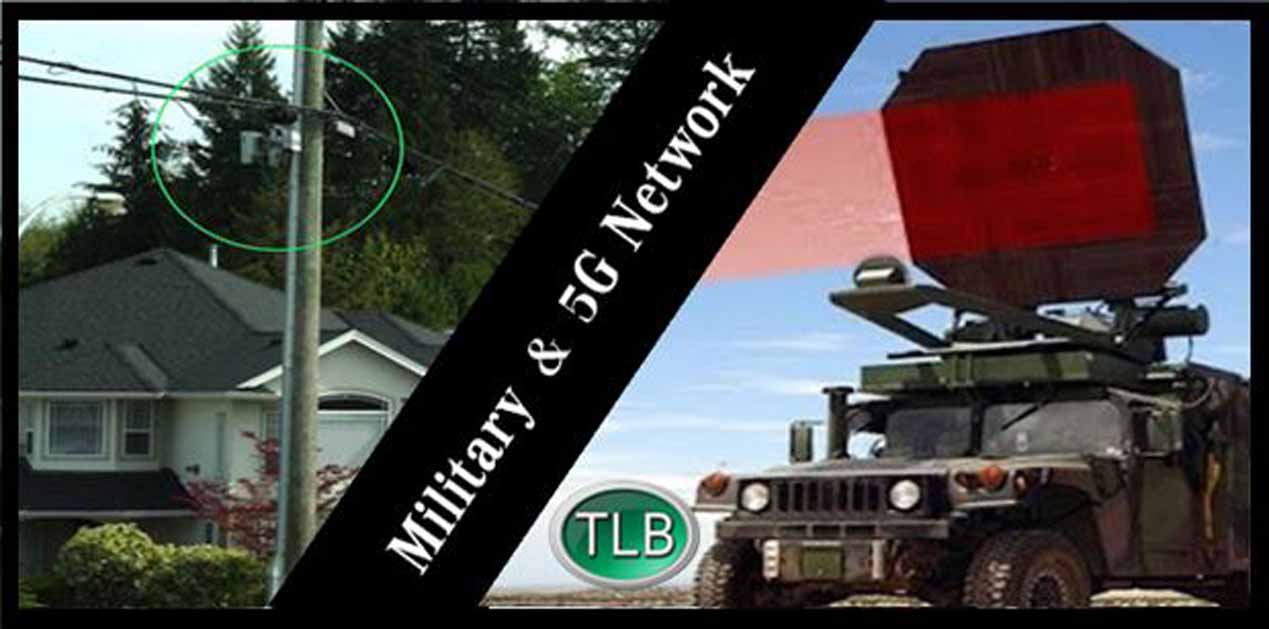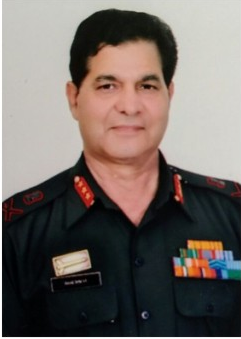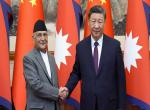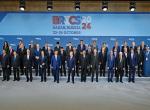Technological superiority has always been the main battle winning factor all through the history of warfare. With no matching weaponry in the Indian arsenal, Bharat, with all the requisite structures of a strong nationality, buckled in face of artillery fire of Babur and subsequently the fire arms of the European mercenaries. As a result, outsiders could intrude into the political space of the Indian sub-continent and ruled us for centuries. Technological superiority continues to be the fundamental fabric even in the present day hybrid warfare environment.
Technology is changing very fast outpacing the time cycle for development and induction of weapon systems. In fact technology has acquired a strategic stature with its global connect impacting the political, economic and military matrix of the nations. Apropos, in modern times whosoever has an edge in geo-technology domain would also be ahead in geo-politics and related geo-economics when it comes to national power and operational art for war fighting. The 5G technology has such a potential of being a game changer of geo-strategic import as never seen before. For industry and technology companies, 5G enabled uninterrupted connect and instant response will open doors to new technological horizons and their applications. It would connect many more devices to the internet than just the phone and computer thus enhancing the scope and reach in both civil as well as military parlance. That’s what makes the control of 5G technology a new paradigm for strategic superiority amongst the big powers. A competition amongst them has already started and there is an ongoing politico-technical war of aggressive designs.
Out of all the technical parameters which contribute towards combat superiority, it is the primacy of digital web of IT network which transcends across intelligence, command & control and operations of almost all the weapon systems and platforms. It is an all pervading phenomenon which is transforming the old analog based systems and structures through digital means with much more efficient ways of war fighting. Network centricity of the combat forces is considered central to facilitating C4I2 regime, higher battle field awareness and transparency, shorter OODA loop, force protection and integration amongst all the combat constituents, alongside operation logistics synergies.
Hybrid warfare warrants superiority of military capabilities and its application in nuclear, conventional, sub-conventional warfare over land, air, sea, space and cyber domains. For that, it is the digital technology which provides the essential cutting edge to attain superior capabilities over the opponent. Computers, laptops and mobiles are the new media to seek information and communicate it to operate, control, and manage weapon platforms and their higher direction connect. The scope would increase further with more and more equipment and devices directly connected to the 5G spectrum for their operation. Voice, text, photo, video, internet, voice over internet, maps, GPS, satellite communication are the features available on the mobiles as on date and expected to further increase by the day. Accordingly, mobiles are gradually becoming one equipment answer to all the digital features of communication with convenience of carriage and maintenance by the soldiers and the commanders. In that, faster the speed, higher the quality, and greater the reliability and system interface, better it would be for attaining the combat superiority. In that, 5G is the latest technology on the block with promise of much higher facilities and efficiency as compared to existing mobile configurations.
The 5G technology construct uses nano-core which is a convergence of nano technology, cloud computing, and all IP architecture which makes it capable of supporting the Wireless World Wide Web (WWWW) and Dynamic Ad hoc Wireless Net Work (DAWN). It has a bandwidth of 1000 megahertz as against 100 megahertz of 4G, and one millisecond latency with speeds 20 times more than that of 4G devices. The 5G is also better as it has higher power and energy of signal, being directional unlike 4G with much lower signal strength. Moreover, 5G works on higher frequency which is better for supporting the data without interfering with other wireless systems, hence larger application options. Besides the above capabilities, the cutting edge application of 5G technology lies in the realms of Artificial Intelligence (AI) which is expected to permeate most of the da-to-day utilities in times to come. 5G mobiles would be part of Global System for Mob Communication (GSM) and will not require Wi-Fi for their operation, besides, as reported, getting charged when not in use. Hence, it would be a system with high quality, reliability, speed, reach and host of user friendly features.
However, 5G cell grids would be located in much higher density as compared to the existing towers besides its non-interoperability with 4G compliant grid and smart phones as of now. Therefore, it may require modification of existing infrastructure, or a separate grid all together which would require capital investment both by the service provider as well as the consumer. Therefore, till the time there are large number of consumers, the return on investment may not be optimum impacting on profitability of the business. Besides the above, there are known to be security connotations which stem from its pervasive construct with high band width and access to large application options, the very attributes that make 5G such an improvement in its quality and utility. Hence, the system would be open to exploitation of its cyber vulnerabilities for data theft and espionage by the service provider. Therefore, it is prudent to analyze all the pros and cons prior to introducing 5G technology in the highly sensitive civil as well as military domain, security being a major concern. Recently, there are reports of US not permitting China’s Huewei Company to deploy their 5G network due to data security and political reasons. The US, surely, has done their spade work with best of technology and experience at their command. Such a reservation by the US cannot be ignored and deserves scrutiny while working out own response.
The essential requirement for army communication systems is its capability to connect distant entities to attain higher operational flexibility and synergy amongst all components of the combat force in the tactical battle area (TBA). Accordingly, the Army has been working on network enablement for battle field awareness through seamless communications across the entire span of tactical battle field and command hierarchy. The system needs to have continuity of communication network even across the borders with requisite resilience to keep pace with the advancing forces into enemy territory. The Air Force has AFNET and Navy has satellite based network enabled communication grids. The Army has host of schemes like Battle Field Management System (BMS) for frontline echelons, Tactical Communication System (TCS) for higher headquarters, Command Information and Decision Support System (CIDSS) for speedy decision making and Artillery Command, Control and Communication System (ACCCS) under development as part of network centricity. In that, cellular net connectivity beyond the ASCON hubs is available in few selected areas only as of now. Offensive operations across the borders perforce have to depend on older generation radio, mobile cellular grid and satellite based equipment, thus impacting on operational synergy where it matters the most. These technological inadequacies prevail even in the insurgency prone remote areas where the Army is deployed. The BMS project, the main stay of battle field awareness at tactical level, is reported to have been dropped as of now due to financial constraints, whereas the requirement for digital connectivity to attain combat superiority cannot be done away in the interest of national security.
While the 5G technology has potential for creating network centricity of higher quality and efficiency, there would be a need to assess its operational viability in varied terrain and combat contingencies in Indian context. It would warrant establishment of 5G grid and cell sites, create solutions for interoperability with the current equipment, and training of the troops to operate the 5G enabled applications. However, it seems to be a tall order as it may need a change of the equipment profile and support structures in a big way. Given the archaic procurement procedures it would take long time before such a change over would be possible. This issue needs utmost attention of the Government as it becomes neigh possible for the armed forces to keep pace with the fast evolving technologies. Unless the procurement policy is aligned as a function of operational expediency and dynamics of technological advancements, we will continue to indulge in futile spirals of procedural chase impacting on the national security.
The Government has plans of go in for trials of 5G system shortly and the media is rife with the talks of the Chinese company Huewei also participating in it alongside other foreign companies . However, in view of security issues of 5G technology, it would be ideal to create capability to produce 5G mobiles and support structures within the country. In the interim, the cyber experts have an important role to come up with solutions to sanitize the entire gamut of cyber security at each level of national hierarchy. As regards to armed forces, it may need allocation of a dedicated spectrum and part of national 5G infrastructure as and when it comes up. These are difficult decisions in absence of validation of this new technology in the country and its viability in military domain. Therefore, looking at the varied technical, financial and management constraints it would be better to continue with optimal mix of existing technologies for the time being. Subsequently, only selected fields may like to switch to the 5G technology initially, and that too once the requisite support structures and security fire walls are in place. Later when the technology further matures, we may gradually increase the scope of its application.
Accordingly, in the given circumstances, as of now India should limit to priority evolution of doctrine and concept of 5G infusion in the national communication structure. While concentrating on experimental and trials to be ready and updated for transition, we may take a call as and when it is appropriate to change over to this cutting edge technology for the armed forces. One has to keep in mind that it would not be a simple technology up gradate from 4G to 5G, it is a bouquet of transformational service opportunities impacting economy and national security, enhanced efficiency of mobiles and computers just being small parts of it. Therefore, it has to be a pragmatic and a thought-through decision in sync with the entire spectrum of technical feasibility and operational viability alongside technology transformation already in progress in the armed forces. ‘The first step to be a small one’ should be the norm in line with Confucian philosophy.
(Lt Gen Rameshwar Yadav, PVSM, AVSM, VSM (Veteran) is a former Director General Infantry, the Indian Army)
(The paper is the author’s individual scholastic articulation. The author certifies that the article/paper is original in content, unpublished and it has not been submitted for publication/web upload elsewhere, and that the facts and figures quoted are duly referenced, as needed, and are believed to be correct). (The paper does not necessarily represent the organisational stance... More >>
Image Source: https://www.thelibertybeacon.com/wp-content/uploads/2018/10/5G-Crowd-Control-feat-10-7-18.jpg




_1_0.png)






Post new comment